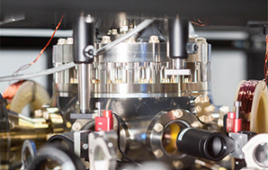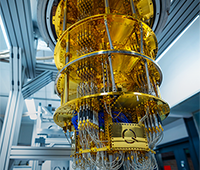Low-cost DNA Decoding Machine Developed
A biotechnology company announced it has developed a machine to decode an individual’s DNA in a day for $1,000, a long-sought price goal for making the genome useful for medical care. Life Technologies said it was taking orders for the technology, which it expects to deliver in about a year. The Carlsbad, CA, company said three major research institutions had already signed up for the $149,000 machine: the Baylor College of Medicine, the Yale School of Medicine and the Broad Institute of Cambridge, MA.
A second company, Illumina of San Diego, also introduced a new technology that it said will decode an entire genome in about 24 hours. Its statement did not estimate the cost per genome.
The machines, called sequencers, allow scientists to identify the arrangement of the 3 billion chemical building blocks that make up someone’s DNA.
Since the first sequencing of the basic human genome was announced at the White House in 2000, the costs of sequencing DNA have steadily tumbled. The $1,000 target has long been cited as a key step toward making the technique practical for doctors to use to help their patients, such as for revealing vulnerabilities to certain diseases or tailoring medical treatment.
Sequencing whole genomes is now done primarily for research. It’s different from the service some companies offer to consumers that cover just part of the genome or particular spots in it, such as for information on ancestry or disease susceptibility.
The $1,000 cost for a whole genome is about the same as many of today’s lab tests, said Chad Nussbaum, co-director of the Genome Sequencing and Analysis Program at the Broad Institute. This announcement is “bringing the DNA sequence closer” to being affordable and fast enough for doctors to use, Nussbaum said. If the machine works as expected, a doctor might send a patient’s DNA to a lab and get useful information back in about a week, he said.
Whether genomes from the new machine will actually cost exactly $1,000 will depend on how one calculates that figure, Nussbaum said. But, even if it’s just in the neighborhood, the technology could become widely adopted by doctors, he said.
Richard Gibbs, who directs the Human Genome Sequencing Center at Baylor, said, “We will see if the machines really perform as well as described” in terms of cost and accuracy. “We’re optimistic.”
Nussbaum emphasized that uncovering a deluge of DNA data about a patient is one thing, and being able to analyze it for useful information is quite another.
“You’ve got to glean the news out of the genome, and you’ve got to give it to the doctor in a usable way,” he said. The ability to do that analysis is still “a developing story,” he said.
In the shorter term, the relatively low cost of the machine itself is important because it will let more research laboratories get into DNA sequencing, Nussbaum said.
Copyright 2012 The Associated Press



